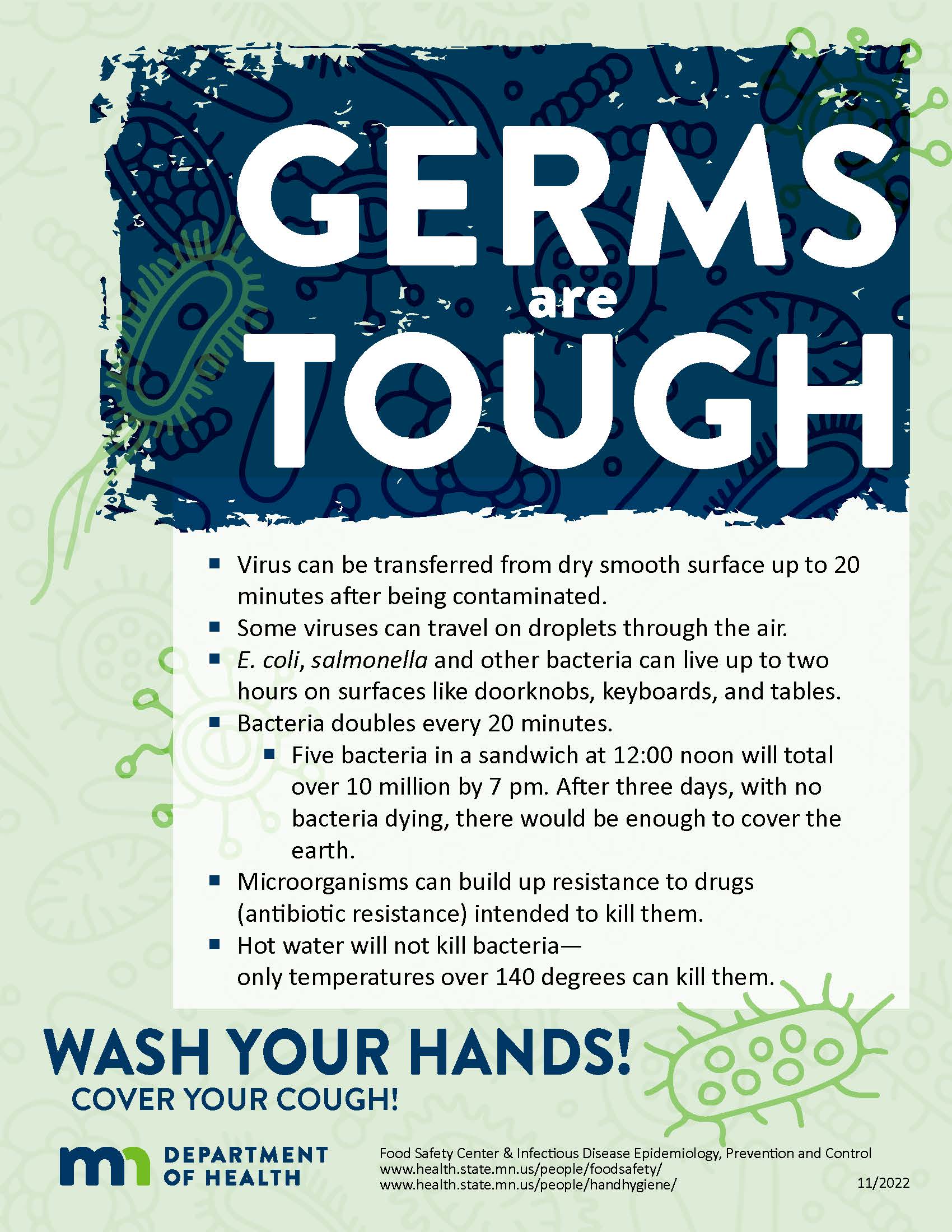When and Why: Wash Your Hands
- When and Why Home
- Diseases
- Antibiotic Resistance
- 5 Common Ways Germs are Spread
- Germs are Tough
- When Should I Wash Poster
Hand Hygiene
- Hand Hygiene Home
- Soap and Water
- Hand Sanitizer
- Why and When
- Choosing and Using Soap
- Teaching Hand Hygiene
- For Schools and Child Care
- For Food Handlers
- For Health Care Professionals
- Posters and Print Materials
Related Topics
Contact Info
Infectious Disease Epidemiology, Prevention and Control Division
651-201-5414
Germs Are Tough
This poster teaches about germs.
Download a print version of this document:
Germs are Tough (PDF)
- Virus can be transferred from dry smooth surface up to 20 minutes after being contaminated.
- Some viruses can travel on droplets through the air.
- E. coli, salmonella and other bacteria can live up to two hours on surfaces like doorknobs, keyboards, and tables.
- Bacteria doubles every 20 minutes.
- Five bacteria in a sandwich at 12:00 noon will total over 10 million by 7 pm. After three days, with no bacteria dying, there would be enough to cover the earth.
- Five bacteria in a sandwich at 12:00 noon will total over 10 million by 7 pm. After three days, with no bacteria dying, there would be enough to cover the earth.
- Microorganisms can build up resistance to drugs (antibiotic resistance) intended to kill them.
- Hot water will not kill bacteria—only temperatures over 140 degrees can kill them.
Last Updated: 10/20/2022
